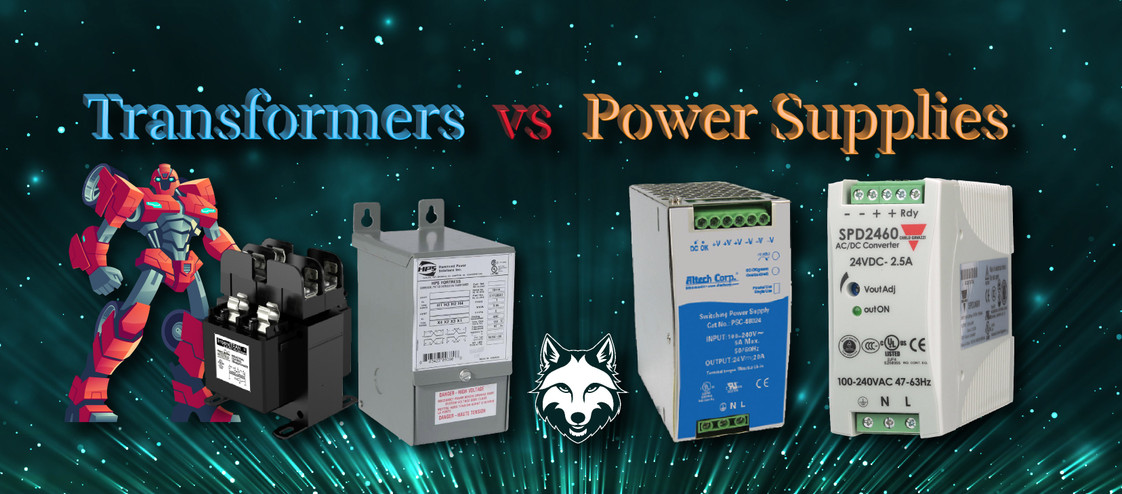
Transformer vs Power Supply: What's The Difference?
Posted by Theresa Hoffman on Jul 11th 2024
In the world of electronics, power supplies and transformers are essential components that keep our devices humming!
While they both deal with electrical power, they each play a specific role in getting the right juice to your electronics.
But what exactly is the difference? Let’s break them down and learn more about how they play a role in your application.
Power Supply
While most industrial facilities rely on AC (Alternating Current) power from the main grid, many industrial machines actually require DC (Direct Current) to operate.
This creates a need for power supplies, which act as the bridge between these two worlds.
Power supplies take the incoming AC voltage and regulate it, ensuring a consistent and safe DC output voltage at the specific level each machine needs.
This not only keeps things running smoothly but also protects equipment from damage by limiting the amount of current delivered.

Here are some various types of power supplies:
- AC-DC Power Supplies: The most common type, converting AC grid power to DC for equipment.
- DC-DC Converters: Boost or buck existing DC voltage levels to meet specific equipment requirements.
- Switch-Mode Power Supplies (SMPS): Highly efficient power supplies that use electronic switching to regulate voltage.
- Uninterruptible Power Supply (UPS): Provides backup power to critical equipment during power outages.
Transformers
Large industrial facilities require power distribution across vast areas to reach numerous machines.
While they receive high voltage from the main grid, this level isn't suitable for all equipment. Transformers come to the rescue!
They act as voltage regulators, stepping down the high voltage to a safer level for distribution through feeder lines across the facility, or stepping up voltage for long distance transmission.

Here are some specific types of transformers commonly used in industrial applications:
- Power Transformers: These high-capacity transformers handle the initial step-up of voltage for long-distance transmission within the facility.
- Distribution Transformers: These transformers further step-down the voltage for distribution across different sections of the facility.
- Dry-Type Transformers: Used in environments where oil-filled transformers pose a fire risk, these transformers utilize air or an inert gas for cooling.
- Cast-Resin Transformers: Encapsulated in epoxy resin for better fire resistance and compactness, these transformers are often used in substations or for sensitive equipment.
Let’s simplify…
While a transformer regulates your voltage to a specific level that your equipment needs, power supplies change the type of current (AC to DC).
Here is a side-by-side to see if a power supply of transformer is right for your application:
Power Supply
Function: Converts AC to DC and vic versa
Input/Output Current: Can change AC to DC or vice versa
Output Voltage: Specific DC voltage
Common Use: Powering Electronic devices
Transformer
Function:Changes AC voltage level
Input/Output Current: Maintains AC
Output Voltage: Different AC voltage
Common Use: Adjusting voltage for appliances, power grid
